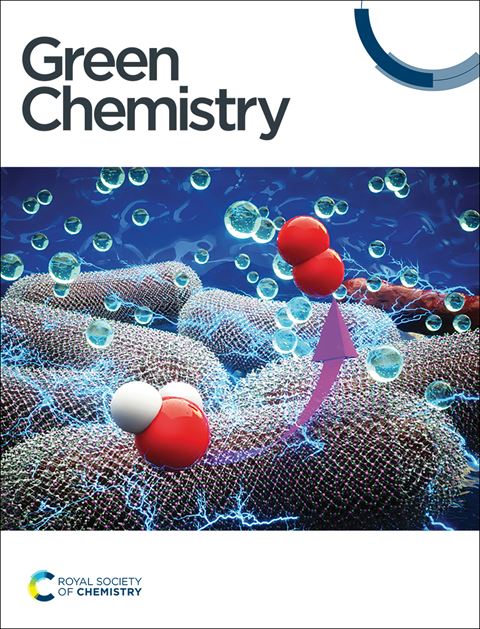Insights into the reductive catalytic deconstruction of lignin over ultralow-loading palladium–zinc catalysts derived from zinc imidazolate frameworks†
IF 9.3
1区 化学
Q1 CHEMISTRY, MULTIDISCIPLINARY
引用次数: 0
Abstract
The development of high-performance noble metal catalysts at the atomic scale for the selective chemical catalytic conversion of lignin into monophenolic compounds is highly desirable but remains a challenge. Herein, we report a single-atom strategy to fabricate a highly active and stable hydrogenolysis catalyst containing an ultralow Pd content (0.1 wt%) using cobalt and zinc imidazolate frameworks as precursors. The resultant Pd–Zn@NC catalyst exhibits outstanding activity in the reductive catalytic deconstruction of lignin into aromatic compounds. The catalyst affords a phenol monomer yield of up to 49.6%, which surpasses that of commercial Pd/C. Notably, it demonstrates high selectivity towards unsaturated allyl monomers, reaching a maximum of 91% under optimized conditions. Mechanistic studies using β-O-4′ mimics reveal that the high dispersion of Zn contributes to the dissociation of hydroxyl groups, while the atomically dispersed Pd significantly enhances the hydrogenation performance. The synergistic interactions between Pd and Zn active sites activate the C–O bonds, thereby enhancing reductive aryl-ether scission in lignin.
从咪唑锌框架衍生的超低负载钯锌催化剂上还原催化分解木质素的研究
在原子尺度上开发用于木质素选择性化学催化转化为单酚类化合物的高性能贵金属催化剂是非常需要的,但仍然是一个挑战。在此,我们报告了一种单原子策略,以钴和锌咪唑酸框架为前体,制备了含有超低Pd含量(0.1 wt%)的高活性和稳定的氢解催化剂。合成的Pd - Zn@NC催化剂在木质素还原催化分解成芳香族化合物方面表现出优异的活性。该催化剂的苯酚单体产率高达49.6%,超过了Pd/C的产率。值得注意的是,它对不饱和烯丙基单体具有很高的选择性,在优化条件下最高可达91%。利用β-O-4 '模拟物进行的机理研究表明,Zn的高度分散有助于羟基的解离,而原子分散的Pd则显著提高了氢化性能。Pd和Zn活性位点之间的协同相互作用激活了C-O键,从而增强了木质素中的还原性芳醚裂解。
本文章由计算机程序翻译,如有差异,请以英文原文为准。
求助全文
约1分钟内获得全文
求助全文
来源期刊

Green Chemistry
化学-化学综合
CiteScore
16.10
自引率
7.10%
发文量
677
审稿时长
1.4 months
期刊介绍:
Green Chemistry is a journal that provides a unique forum for the publication of innovative research on the development of alternative green and sustainable technologies. The scope of Green Chemistry is based on the definition proposed by Anastas and Warner (Green Chemistry: Theory and Practice, P T Anastas and J C Warner, Oxford University Press, Oxford, 1998), which defines green chemistry as the utilisation of a set of principles that reduces or eliminates the use or generation of hazardous substances in the design, manufacture and application of chemical products. Green Chemistry aims to reduce the environmental impact of the chemical enterprise by developing a technology base that is inherently non-toxic to living things and the environment. The journal welcomes submissions on all aspects of research relating to this endeavor and publishes original and significant cutting-edge research that is likely to be of wide general appeal. For a work to be published, it must present a significant advance in green chemistry, including a comparison with existing methods and a demonstration of advantages over those methods.
 求助内容:
求助内容: 应助结果提醒方式:
应助结果提醒方式:


